10 Wildflowers That Grow in Nevada (Identification Guide with Pictures)
-
Pete Ortiz
- Last updated:

By definition, a wildflower is any type of flower that grows in the wild. And that means your typical rose species could also be a wildflower, so long as it wasn’t intentionally planted or seeded.
In Nevada, there are many species of wildflowers, but the following are the 10 most common wildflower species that you’ll easily find in the Silver State.
The 10 Wildflower Species That Grow in Nevada
1. Fragrant White Sand-Verbena
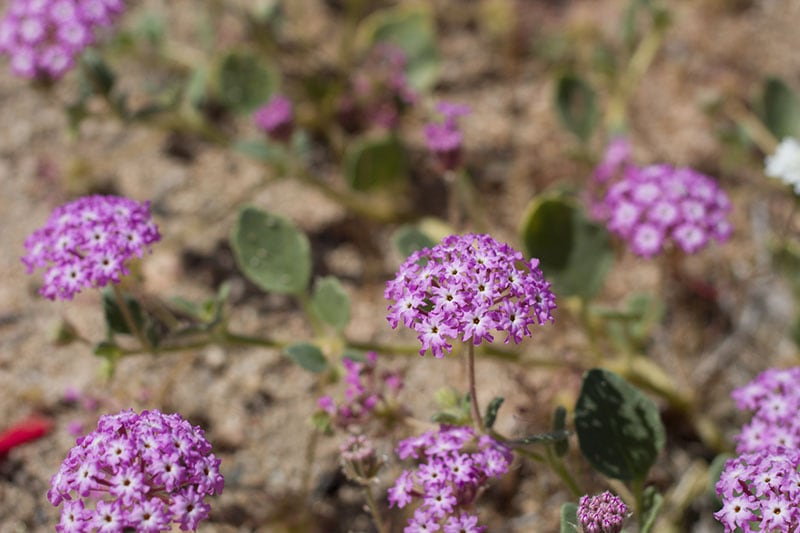
| Scientific name: | Abronia elliptica |
| Season: | April to September |
| Family: | Nyctaginaceae |
| Flower Color: | White |
In the scientific realm of botany, the Fragrant White Sand-Verbena is called Abronia elliptica. Physically, it has features that are very similar to Abronia fragrans, which is a common wildflower species in Texas. To distinguish the two, we normally compare their stems, leaves, and seeds.
Abronia elliptica’s stem and leaves are hairy, while the seeds’ general shape is way different from that of the Abronia fragan. Besides the hairiness, the leaves are usually thick and have wavy margins. The stem, on the other hand, likes to lean over after growing vertically upwards.
2. Rayless Goldenhead
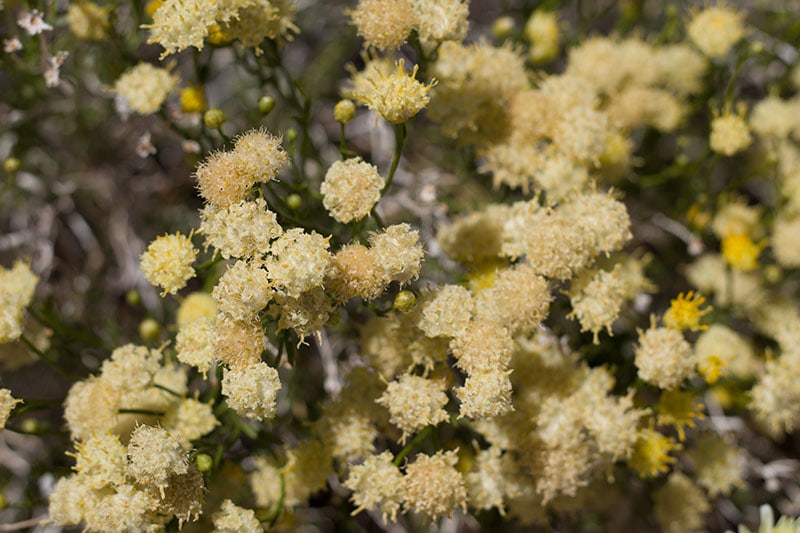
| Scientific name: | Acamptopappus sphaerocephalus |
| Season: | March to June |
| Family: | Asteraceae |
| Flower Color: | Yellow |
This species belongs to the Acamptopappus genus. It’s so common in Nevada, but also widely spread in southern Arizona, Colorado, and California. The Rayless wildflower doesn’t have any ray floret. It only shows up with disc florets that house five pale yellow lobes.
If you see one with a stem that’s pale green, that’s basically a seedling. The adults have woody stems that are covered by grayish bark. Its leaves are always narrow and angled upwards.
3. Common Yarrow
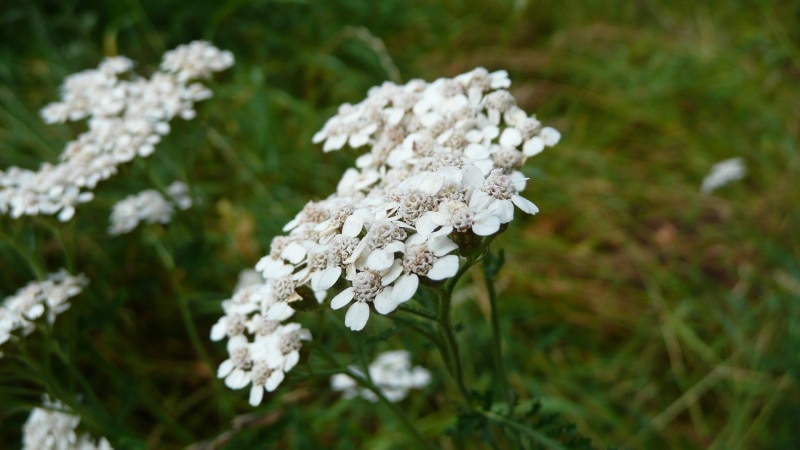
| Scientific name: | Achillea millefolium |
| Season: | March to October |
| Family: | Asteraceae |
| Flower Color: | White |
The Common Yarrow is a special type of wildflower in that it can thrive in any type of environment and at any altitude. So don’t be surprised when you find it listed together with the mountain range species. Its stem is relatively more rigid and gradually becomes woody as the plant ages.
Pharmacists are well acquainted with this species, seeing as it’s been used for generations as medicine and in the production of insecticides. It also contains aromatic compounds, meaning you could use it as an aromatic herb.
4. Foothill Deerweed
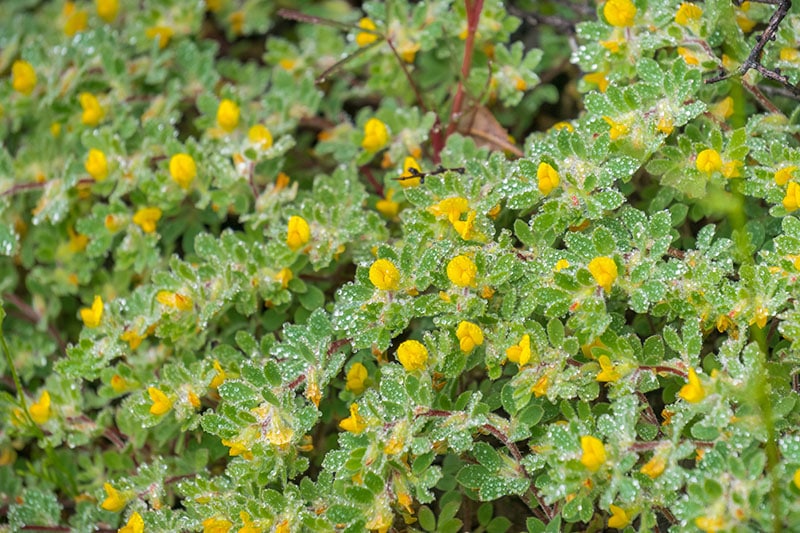
| Scientific name: | Acmispon brachycarpus |
| Season: | March to June |
| Family: | Fabaceae |
| Flower Color: | Yellow |
The Acmispon brachycarpus’ other name is the Foothill Deervetch. And as you can tell, it’s one of the members of the deerweed family. It has fleshy leaves that are hairy and palmately divided. This is a decumbent or prostrate species, meaning its branches are spread along the ground.
Foothill Deervetchs like to grow 5,500 feet above sea level, in the grasslands. Their flowers are orange-yellow, with centers that have a total of 10 stamens—nine of them will be fused, and one will be liberated.
5. New Mexico Bird’s-Foot Trefoil
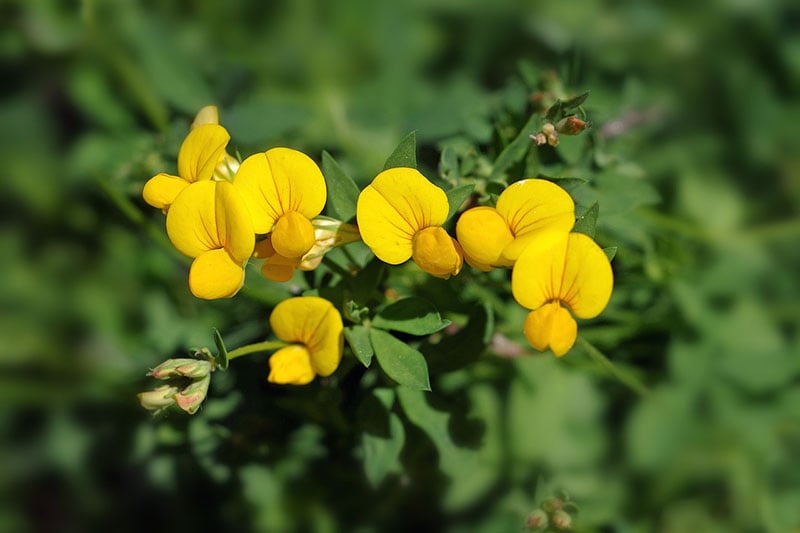
| Scientific name: | Acmispon oroboides |
| Season: | March to September |
| Family: | Fabaceae |
| Flower Color: | Yellow |
Also known as the Pine Deervetch, the New Mexico Bird’s-Foot Trefoil is common in the eastern side of Nevada. Its preferred altitude range is 3,500 to 5,000 feet above sea level, and the habitat is typically described as open woodland.
This species’ produces flowers that are yellow and attached by appressed-hairy stalks. Just like most members of its family, it also has a decumbent stem and leaves that are divided into narrow leaflets. Each leaf will have 3 to 6 leaflets, which are 0.3 inches long.
6. Western Snakeroot
| Scientific name: | Ageratina occidentalis |
| Season: | June to October |
| Family: | Asteraceae |
| Flower Color: | Pink |
You’re more likely to find this pink-flowered species in a mountainous location. If the conditions are right, it will grow to a height of 27 inches and produce leaves that are 2 inches long. The leaves are triangular in shape and have irregularly serrated edges.
The Western Snakeroot always has a green-colored stem. And regardless of whether it’s young or old, it will also have purplish blotches. Its flowerhead has disc florets that are pale pink and about 0.5 inches long.
7. Horsemint Giant Hyssop
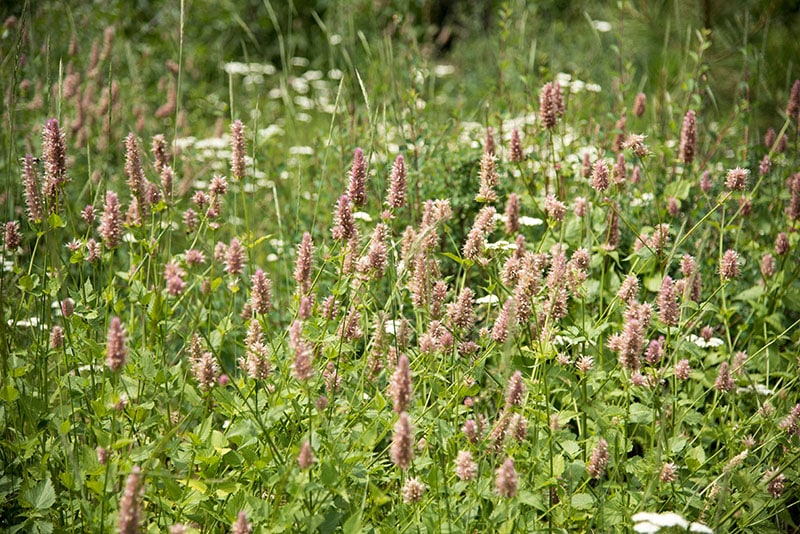
| Scientific name: | Agastache urticifolia |
| Season: | June to August |
| Family: | Lamiaceae |
| Flower Color: | Pink |
The Agastache urticifolia belongs to the Lamiaceae family, otherwise known as the Mint family. It’s a grouping of wildflowers found in almost any habitat and elevation. This plant has leaves that are 3 inches wide and 4 inches long, a stem that’s hairless or finely hairy, and flowers that have a glandular calyx.
The said leaves usually grow along its stem (at opposite intervals) and have coarsely toothed margins. Its flowers are unequivocally pink and produced in a dense cluster located at the tip of the stem.
8. Northern Water-Plantain
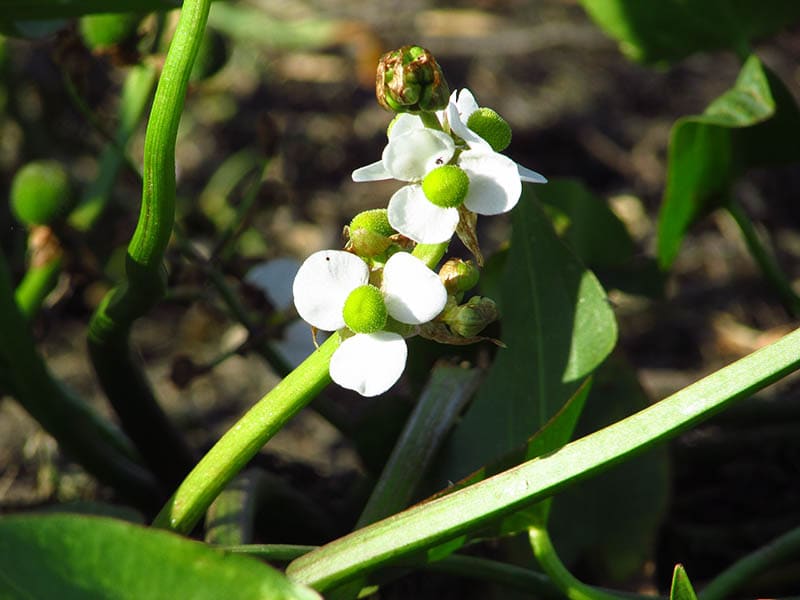
| Scientific name: | Alisma triviale |
| Season: | March to September |
| Family: | Alismataceae |
| Flower Color: | White |
The Northern Water-Plantain belongs to the Alismataceae family. All species in that family are aquatic in nature, and that’s why this plant likes to grow on muddy banks or in water. Its stem is decumbent, and the flowers are bisexual.
That’s to say, it has everything it needs to produce several staminate and pistillate blooms. It’s important to add that the flowers are white and the leaves broadly lanceolate or ovate. A mature Northern Water Plantain will be 3 feet tall.
9. Geyer’s Onion
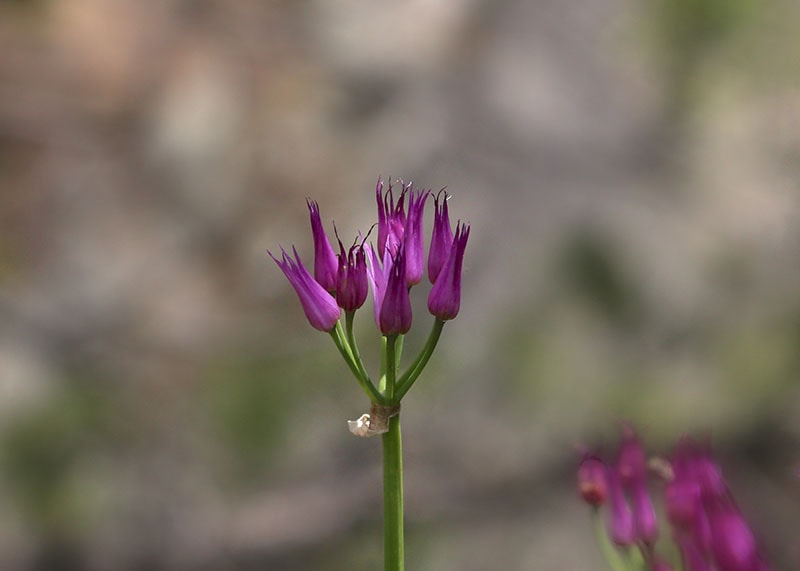
| Scientific name: | Amaryllis (Amaryllidaceae) |
| Season: | May to September |
| Family: | Amaryllis (Amaryllidaceae) |
| Flower Color: | Pink |
The Geyer’s Onion is yet another species that doesn’t have a preferred habitat or elevation. It will thrive in the mountain tundra zone the same way it does in the woodlands. The stalk is always green and has a few eaves at the base.
Geyer’s can be found in two varieties. There’s the Var geyeri, which has 25 flowers, and the Var temerum, which only produces 5 flowers. What’s more, the former has no bulbils while the latter has several.
10. White Burrobrush
| Scientific name: | Ambrosia salsola |
| Season: | March to May |
| Family: | Asteraceae |
| Flower Color: | White |
In some parts of the world, this wildflower goes by the name “Winged Ragweed” or “Cheesebush.” It’s part of the Asteraceae family, meaning it produces a compound flowerhead as well. Sadly though, the said flowerheads are small and don’t usually last that long.
The Burrobrush’s inflorescence has both male and female flowers. Its staminate has at least five florets, while the pistillate houses one. This particular species is perennial and likes to shade most of its leaves and twigs during summer.
Frequently Asked Questions (FAQ)
What’s a Perennial Wildflower?
A perennial species is the type of wildflower that grows year in, and year out. Their first season’s growth rate is normally slower than the second one because they spend a significant amount of their energy establishing sturdy roots. In other words, don’t expect them to start blooming until their second year.
What’s An Annual Wildflower?
An annual species is a type of plant that has a one-year life cycle. And seeing as they don’t live long, they usually boom during the first season—that’s 2 to 3 months after planting. It’s difficult to find an annual wildflower reseeding, but some of them do if the conditions are right.
What’s a Biennial Wildflower?
Biennial wildflowers are not as common as annuals or perennials. And the prefix “bi-” in biennial is a reminder that these species have a 2-year life cycle. They’ll spend most of their first year developing roots and foliage, then blooming during the second year.
Final Thoughts
Correctly identifying a wildflower is no easy feat even for an expert with years of experience. Technology has made the entire identification process more difficult by introducing to us hybrids that have attributes typically found in other species. Don’t worry too much if you can’t get the hang of it. Keep on learning, and you’ll eventually know what to look for.
Featured Image Credit: Goran Horvat, Pixabay
Contents


